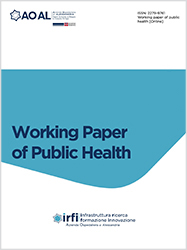Management of obstetrics tears

Accepted: 5 September 2016
All claims expressed in this article are solely those of the authors and do not necessarily represent those of their affiliated organizations, or those of the publisher, the editors and the reviewers. Any product that may be evaluated in this article or claim that may be made by its manufacturer is not guaranteed or endorsed by the publisher.
Objective: Aim of the study is to analyse the literature about the management of obstetric tears, in order to optimize clinicians work and women perineal care after spontanous delivery.
Methodology: Review of literature.
Results: After a correct definition of obstetric injuries (1,2,3,4, degree), we describe main risk factors (birth weight, nulliparity, induction of labour, epidural analgesia), the role of episiotomy (midline or mediolateral one), the correct clinical conduction of labour in the care of perineum and the principles and techniques (over lapping or end-to-end techinques, for sphinterial repair) of obstetric suturing. We define also the correct clinical management of severe obstetric injuries repair (suture as soon as possible to reduce bleeding and risk of infection, check equipment and count swabs before starting the procedures, good lighting, ask for more experienced assistance if in doubt regarding the extent of trauma or structures involved, use general anesthesia, ensure good anatomical alignment of the wound, rectal examination after completing the repair of III-IV degrees) and the corret management in postnatal period (follow up in prevision of other pregnancies).
Conclusions: Improving surgical skills of clinicians could preserve perineal dysfunction.
PAGEPress has chosen to apply the Creative Commons Attribution NonCommercial 4.0 International License (CC BY-NC 4.0) to all manuscripts to be published.

 https://doi.org/10.4081/wpph.2016.6864
https://doi.org/10.4081/wpph.2016.6864




